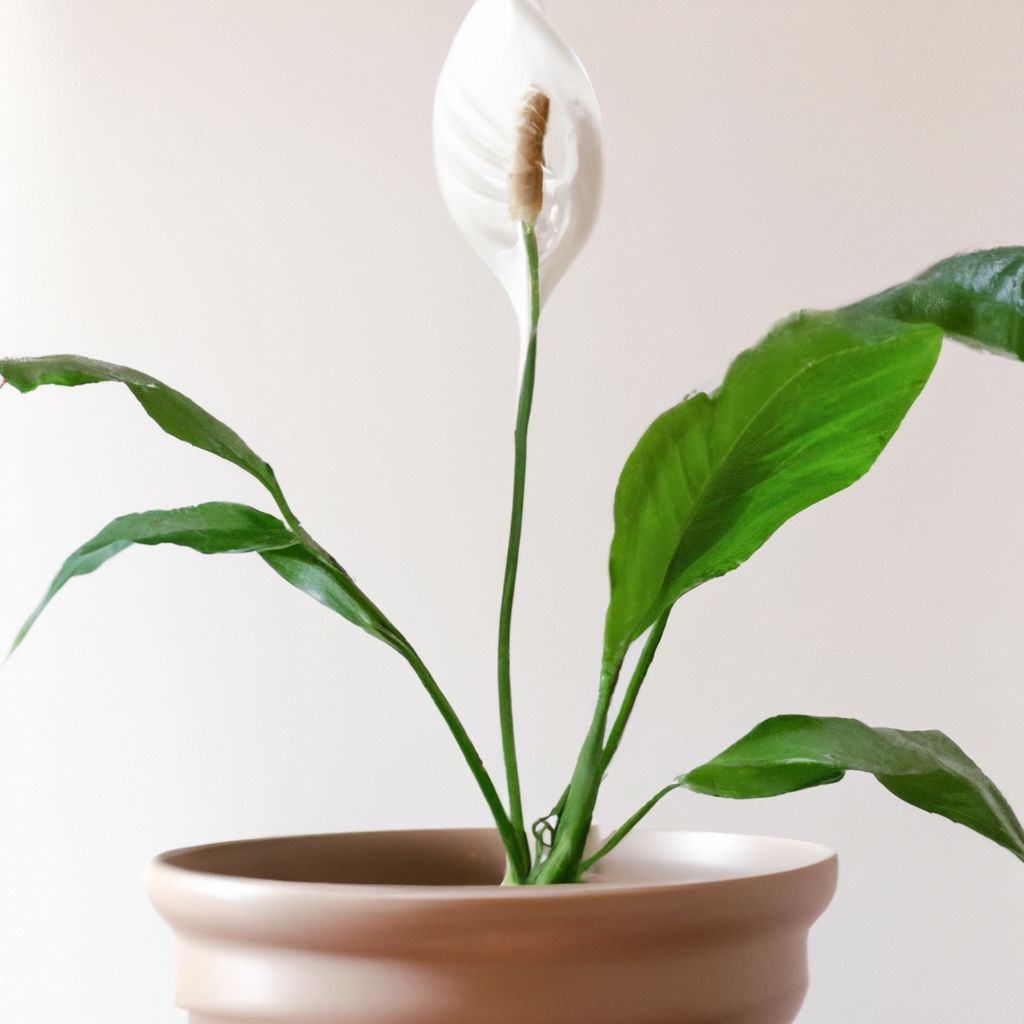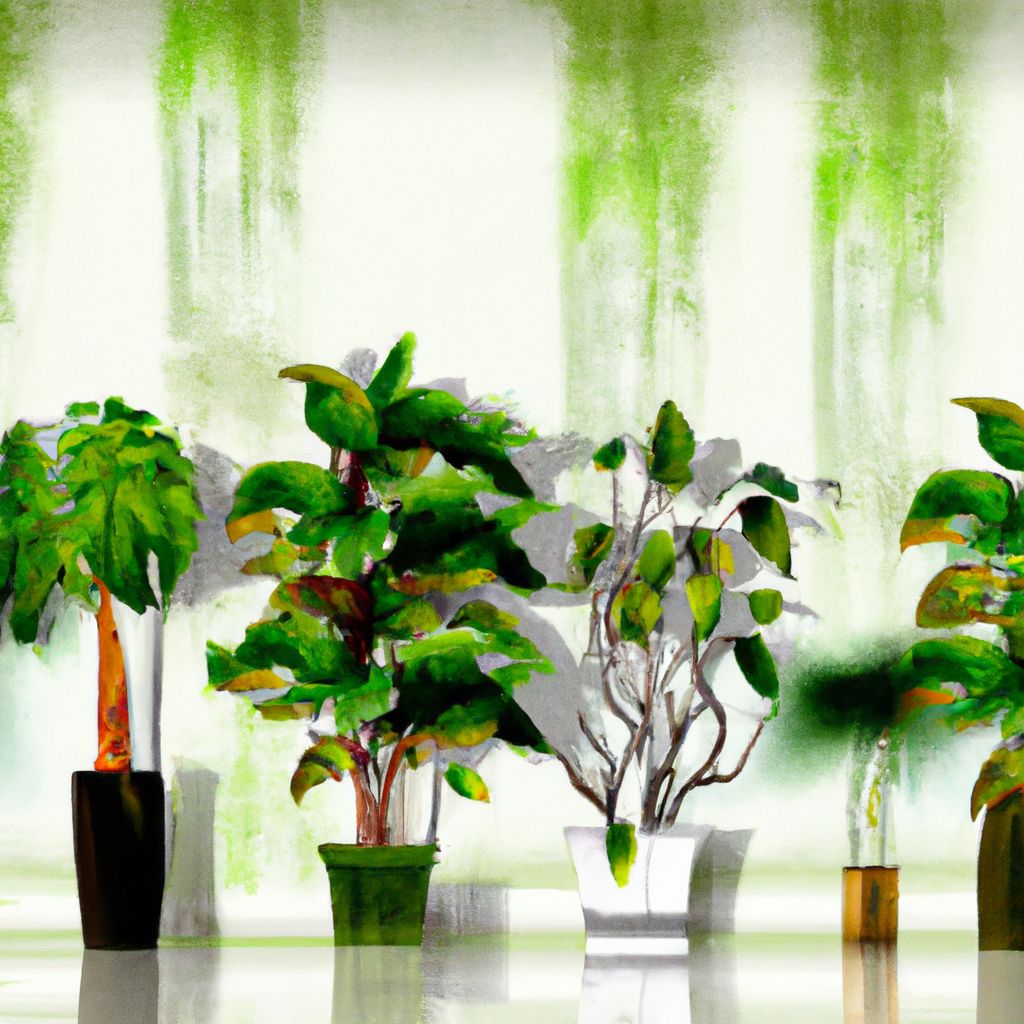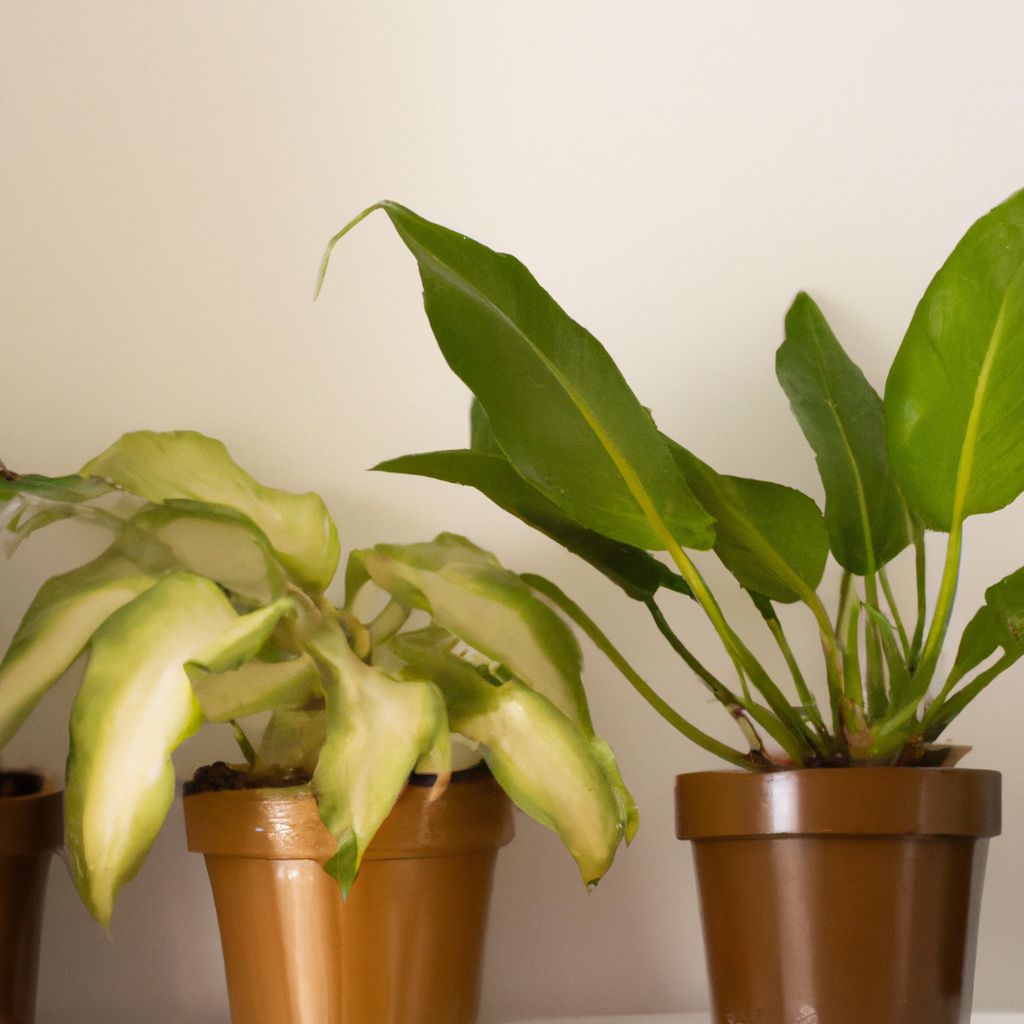- Introduction to Indoor Plants and Air Purification
- Importance of Air Purification in the Home
- Understanding How Plants Purify the Air
- Criteria for Choosing Indoor Plants for Air Purification
- Indoor Plant #: Spider Plant
- Indoor Plant #: Snake Plant
- Indoor Plant #: English Ivy
- Indoor Plant #: Bamboo Palm
- Indoor Plant #: Peace Lily
- Indoor Plant #: Aloe Vera
- Indoor Plant #: Rubber Plant
- Indoor Plant #: Boston Fern
- Indoor Plant #: Philodendron
- Indoor Plant #: Chinese Evergreen
- Indoor Plant #: Gerbera Daisy
- Tips for Caring for Your Indoor Plants
- Conclusion: The Impact of Indoor Plants on Indoor Air Quality
Introduction to Indoor Plants and Air Purification

Indoor air pollution is a serious health concern, as stated by the Environmental Protection Agency (EPA). Whether it's from dust, pollen, pet dander, mold, or smoke, poor indoor air quality can lead to a myriad of health issues such as allergies, asthma, and respiratory diseases. One natural, aesthetically pleasing, and cost-effective solution to combat indoor air pollution is the use of indoor plants.
Indoor plants do more than just brighten up a room; they also play a pivotal role in improving indoor air quality. As a part of their photosynthesis process, plants absorb gases through their leaves, including volatile organic compounds (VOCs) - harmful substances like benzene, formaldehyde, and trichloroethylene that are often found in our homes due to the use of synthetic materials and products.
Research conducted by NASA in the late 1980s, known as the Clean Air Study, revealed that certain indoor plants have the ability to remove toxins and purify the air in enclosed spaces. This study, along with subsequent research, has laid the foundation for using indoor plants as natural air purifiers. So, let's explore the 11 best indoor plants that are not only easy to care for but also proficient in purifying indoor air.
Importance of Air Purification in the Home

The importance of air purification in the home cannot be overstated. Indoor air quality is crucial not only for our comfort but also for our health. According to the World Health Organization (WHO), poor indoor air quality can lead to respiratory diseases, heart disease, and even lung cancer. It is worth noting that we spend approximately 90% of our time indoors, making the quality of the air in our homes significantly impactful on our well-being.
Indoor air pollutants come from various sources such as cleaning products, building materials, furniture, electronic devices, and even from the outside air. These pollutants can build up in our homes if there's not enough ventilation or air movement, leading to what's known as "sick building syndrome". Symptoms of this syndrome include headaches, fatigue, and eye, nose or throat irritation, among others.
Air purifiers can help to remove these pollutants, but they are often expensive and require regular maintenance. This is where indoor plants come in. Not only do they absorb harmful toxins from the air, but they also release oxygen, contributing to a healthier and more comfortable living environment. Furthermore, adding indoor plants to your home decor can also provide a sense of tranquility and connection with nature, enhancing your overall well-being.
Understanding How Plants Purify the Air

Understanding how plants purify the air begins with the basics of plant physiology. During photosynthesis, plants take in carbon dioxide and release oxygen, a process that is beneficial for indoor air quality. However, the air-purifying abilities of plants extend far beyond this simple exchange of gases.
The leaves, roots, and soil of plants can absorb indoor pollutants, including harmful VOCs. This is due to a process known as phytoremediation, wherein plants neutralize toxins by either absorbing them or breaking them down into less harmful substances. Some plants even release phytochemicals that suppress mold spores and bacteria in the air, providing an additional air purifying effect.
A groundbreaking study conducted by NASA, known as the Clean Air Study, identified a number of houseplants that are particularly effective at removing common indoor pollutants such as benzene, formaldehyde, and trichloroethylene. The study also found that having one plant per every 100 square feet of floor space can help to maintain optimal air purification.
However, it's important to note that while plants have been proven to improve indoor air quality, they should be used as a complement to other air purification strategies, such as maintaining good ventilation, reducing the use of products that emit VOCs, and regular cleaning to reduce dust and allergens.
Criteria for Choosing Indoor Plants for Air Purification

When choosing indoor plants for air purification, there are several factors to consider to ensure you're selecting the right plants for your needs. The following criteria can serve as a guide:
1. Air-Purifying Ability: The most important factor to consider is the plant's ability to purify the air. Some plants are more efficient at removing specific toxins than others. For example, the spider plant is effective at removing formaldehyde, while the English ivy is known to reduce airborne mold.
2. Maintenance: Different plants require different levels of care. Some plants need a lot of sunlight and regular watering, while others can thrive in low light and require less frequent watering. It's crucial to choose plants that you can comfortably care for based on your schedule and lifestyle.
3. Size: The size of the plant can also impact its air-purifying capabilities. Larger plants with more leaves will generally be able to clean more air than smaller ones.
4. Safety: If you have pets or small children, it's important to ensure that the plants you choose are non-toxic. Some plants, like the peace lily, can be harmful if ingested.
5. Adaptability: Some plants are more adaptable than others to indoor conditions. For instance, the snake plant can tolerate a wide range of light conditions and temperature fluctuations, making it a great choice for many indoor environments.
Consideration of these criteria will help you choose the right plants that will thrive in your indoor environment and efficiently purify your indoor air.
Indoor Plant #: Spider Plant

Spider Plant (Chlorophytum comosum)
Spider plants are renowned for their remarkable air-purifying properties. According to the NASA Clean Air Study, spider plants are capable of removing formaldehyde, a common volatile organic compound (VOC), from the air. Formaldehyde is commonly found in household products like adhesives, grouts, fillers, and cleaning products. The plant's ability to absorb this toxin contributes significantly to improving indoor air quality.
Apart from their air-purifying qualities, spider plants are incredibly low-maintenance, making them perfect for novice gardeners or those with busy schedules. They thrive in indirect sunlight and can tolerate occasional overwatering or underwatering. Their resilience and adaptability make them an excellent choice for many indoor environments.
Spider plants also have a unique aesthetic appeal with their arching leaves and small white flowers. They are ideal for hanging baskets or pots with their leaves cascading down, adding a touch of greenery to any indoor space. However, it's essential to note that while spider plants are non-toxic to humans, they can be mildly harmful to pets if ingested, causing digestive upset.
Indoor Plant #: Snake Plant

Snake Plant (Sansevieria trifasciata)
Snake plants, also known as Mother-in-law's tongue, are one of the most effective indoor plants for air purification. They are unique for their ability to release oxygen during the night, making them an excellent choice for bedrooms to enhance nighttime oxygen levels. The NASA Clean Air Study identified snake plants as one of the top houseplants for removing formaldehyde, benzene, and trichloroethylene - all of which are common indoor air pollutants.
One of the biggest advantages of snake plants is their hardiness. They require minimal care and can survive in low light conditions and irregular watering, making them perfect for those not inherently green-thumbed or often away from home. Their tall, pointed leaves come in a variety of colors and patterns, adding an architectural element to your indoor decor.
However, while snake plants are wonderful for air purification, they are toxic if ingested. They contain saponins that can cause nausea, vomiting, and diarrhea in pets and children. Therefore, they should be kept in an area where curious pets or toddlers won't be able to reach them.
Indoor Plant #: English Ivy

English Ivy (Hedera helix)
English Ivy is a popular indoor plant known for its exceptional air-purifying properties. According to a study conducted by the American College of Allergy, Asthma & Immunology, English Ivy can remove up to 78% of airborne mold in just 12 hours. This makes it an excellent choice for those suffering from allergies or asthma.
Moreover, the NASA Clean Air Study found that English Ivy is proficient in eliminating formaldehyde, benzene, and trichloroethylene from the environment. Its ability to reduce these common indoor air pollutants can contribute significantly to enhancing indoor air quality.
English Ivy plants are relatively easy to care for. They thrive in moderate temperatures and medium sunlight. They are also quite versatile and can be grown either in a hanging basket or as a climbing plant, adding a touch of elegance to your home.
However, it's important to note that English Ivy is considered an invasive species in some areas due to its rapid growth and should be managed carefully. Also, it is toxic to pets and humans when ingested, so it should be placed out of reach of children and pets.
Indoor Plant #: Bamboo Palm

Bamboo Palm (Chamaedorea seifrizii)
Bamboo Palm, also known as the Reed Palm, is a standout choice when it comes to air-purifying houseplants. This tropical plant is recognized by NASA for its ability to remove harmful toxins, such as formaldehyde, benzene, and trichloroethylene, from the air, thereby improving the overall air quality within your home.
Apart from its air purification properties, Bamboo Palm is also a natural humidifier, releasing moisture into the air, which can be particularly beneficial in dry climates or in homes with dry air due to heating systems. This feature also makes it a beneficial plant for individuals with respiratory issues or dry skin.
In terms of care, Bamboo Palms are relatively easy to maintain. They prefer indirect light and can thrive in a variety of lighting conditions, although they do best in high-humidity environments. However, they do need to be watered regularly and prefer well-drained soil.
With their lush, feathery fronds and tall, slender trunks, Bamboo Palms can bring an element of the tropics into your home, all the while enhancing indoor air quality. They are also non-toxic to cats and dogs, making them a safe choice for households with pets.
Indoor Plant #: Peace Lily

Peace Lily (Spathiphyllum wallisii)
Peace Lilies are not only beautiful, with their dark green foliage and elegant white flowers, but they are also one of the best indoor plants for air purification. In the NASA Clean Air Study, Peace Lilies were found to be highly effective at removing benzene, formaldehyde, trichloroethylene, xylene, and ammonia from indoor air. These toxins are common in homes, emitted by items such as paint, cleaners, ink, and various household goods.
Additionally, Peace Lilies are straightforward to care for. They prefer low to medium light and slightly moist soil. They also signal when they need water, as their leaves will droop slightly. Once watered, they quickly perk up again. This makes Peace Lilies a great choice for those new to houseplants or who don't have a lot of time for plant care.
However, it's important to note that Peace Lilies are toxic to humans and pets if ingested. They contain calcium oxalate crystals, which can cause symptoms such as irritation, swelling, and burning sensation in the mouth, throat, and skin. Therefore, they should be kept in a location that is out of reach of children and pets.
Indoor Plant #: Aloe Vera

Aloe Vera (Aloe barbadensis miller)
Aloe Vera is a versatile houseplant known for both its health benefits and air-purifying capabilities. As an air purifier, Aloe Vera is effective in removing benzene and formaldehyde, two toxins often found in household cleaning products and paints that can affect indoor air quality.
Apart from its air-cleaning properties, Aloe Vera is also famous for its medicinal uses. The clear gel inside the plant's leaves can be used topically to treat minor burns, cuts, and skin irritations, making it a handy plant to have in your home.
Aloe Vera plants are extremely easy to maintain. They are a type of succulent and thus prefer dry soil, so they do not need to be watered frequently. They do well in bright, indirect sunlight but can also tolerate lower light levels.
With its unique, spiky appearance and compact size, Aloe Vera is an attractive addition to any space. However, while the gel is beneficial for humans, the plant can be toxic to pets if ingested, causing diarrhea and vomiting. Therefore, it should be placed in an area away from pets.
Indoor Plant #: Rubber Plant

Rubber Plant (Ficus elastica)
Renowned for its large, glossy foliage, the Rubber Plant is an attractive addition to any indoor space. But, it's not just about the aesthetics; Rubber Plants are also excellent air purifiers. They are especially effective at removing formaldehyde from the air, making them a great choice for improving indoor air quality.
Besides their air-purifying abilities, Rubber Plants are also known for their low-maintenance requirements. They can thrive in low to bright indirect light, and they only need to be watered when the top inch of the soil feels dry. This makes them an ideal choice for individuals who want a low-maintenance plant that can deliver on air purification.
With its robust growth and bold leaves, the Rubber Plant can add a touch of tropical appeal to any room. However, it's worth noting that the plant's sap can be irritating to some people and may be toxic to pets if ingested, so it should be kept out of reach of children and pets.
Indoor Plant #: Boston Fern

Boston Fern (Nephrolepis exaltata)
Boston Ferns are well-loved for their lush, feathery fronds, but they also offer significant benefits as natural air purifiers. According to the NASA Clean Air Study, Boston Ferns are particularly good at removing formaldehyde, a common indoor air pollutant, from the environment. They also have the ability to remove xylene and toluene.
In addition to their air-cleaning properties, Boston Ferns are also natural humidifiers, releasing moisture into the air. This can be particularly beneficial in homes with dry air, especially during the winter months when heating systems can cause the air to become dry.
When it comes to care, Boston Ferns prefer a cool, humid environment and indirect light. They need to be kept moist, so regular watering is necessary. Despite their slightly higher maintenance needs, their air-purifying abilities and aesthetic appeal make them a worthwhile addition to any home.
Importantly, Boston Ferns are non-toxic to both humans and pets, making them a safe choice for households with children or animals.
Indoor Plant #: Philodendron

Philodendron (Philodendron spp.)
Philodendrons are popular houseplants known for their lush, tropical look and their air-purifying capabilities. According to the NASA Clean Air Study, Philodendrons are effective at removing formaldehyde from the air, a common indoor pollutant found in many household products and building materials.
There are many varieties of Philodendrons, each with its unique appearance, from heart-shaped leaves to large, split-leaf varieties. This diversity makes it easy to find a Philodendron that suits your aesthetic preferences and space constraints.
Philodendrons are relatively easy to care for. They prefer bright, indirect light but can tolerate lower light levels. They require well-draining soil and should be watered when the top inch of soil has dried out. Their adaptability and low-maintenance requirements make them a popular choice for many indoor gardeners.
However, it's important to note that Philodendrons are toxic if ingested, due to the presence of calcium oxalate crystals. They can cause mouth and throat irritation and digestive issues in both humans and pets. Therefore, they should be kept out of reach of children and pets.
Indoor Plant #: Chinese Evergreen

Chinese Evergreen (Aglaonema)
Chinese Evergreen plants are admired for their striking variegated foliage and their impressive air-purifying abilities. According to the NASA Clean Air Study, Chinese Evergreens are effective at removing a variety of indoor air pollutants, including benzene and formaldehyde, thereby contributing to better indoor air quality.
One of the key attractions of Chinese Evergreens is their adaptability. They can grow in a range of lighting conditions, from low light to indirect bright light, and they prefer well-drained soil that is kept slightly damp. Their low-maintenance needs and their ability to adapt to a variety of indoor conditions make them an excellent choice for both novice and experienced plant owners.
With their lush, colorful foliage, Chinese Evergreens can add a touch of beauty to any indoor space. However, it's important to note that these plants are toxic if ingested. Their leaves contain calcium oxalate, which can cause irritation and burning in the mouth and throat if consumed by humans or pets. Therefore, they should be placed in an area that is out of reach of children and pets.
Indoor Plant #: Gerbera Daisy

Gerbera Daisy (Gerbera jamesonii)
Gerbera Daisies are not just visually pleasing with their vibrant, colorful flowers; they are also exceptional air purifiers. According to the NASA Clean Air Study, Gerbera Daisies are effective at removing benzene, a toxin often found in inks, and trichloroethylene, commonly found in dry cleaning and synthetic materials, from the air. They also release oxygen at night, which can improve your sleep quality.
While their air-cleaning properties are impressive, Gerbera Daisies do require a bit more care compared to some other houseplants. They need plenty of light, well-drained soil, and careful watering to avoid soaking their leaves and causing rot. However, the effort is well worth it for their ability to purify the air and brighten up your home with their cheerful blooms.
It's worth noting that Gerbera Daisies are non-toxic to pets, making them a safe choice for households with curious cats or dogs. However, like all plants, they can cause gastrointestinal upset if consumed in large amounts, so it's still best to keep them out of reach of pets.
Tips for Caring for Your Indoor Plants

Caring for your indoor plants not only keeps them looking beautiful but also ensures they can effectively purify your air. Here are some general tips for maintaining your indoor plants:
1. Understand Your Plant's Needs: Different plants have different light, water, and soil requirements. Some plants thrive in direct sunlight, while others prefer indirect light. Similarly, some plants require frequent watering, while others prefer drier soil. Understanding your plant's specific needs is crucial for its health and survival.
2. Water Properly: Overwatering is a common mistake among novice plant owners. Too much water can lead to root rot and other diseases. As a general rule, only water your plant when the top inch of the soil feels dry to the touch. Ensure your plant's pot has drainage holes to prevent water from sitting at the bottom.
3. Provide Adequate Light: Most indoor plants prefer bright, indirect light. Place your plants near windows with filtered light, or in a well-lit room. If natural light is limited, you can also use artificial plant lights.
4. Keep Your Plants Clean: Dust can block light from reaching the plant's leaves, hindering photosynthesis. Regularly wipe your plant's leaves with a damp cloth to keep them dust-free.
5. Fertilize Regularly: Just like humans, plants need nutrients to grow. Use a houseplant fertilizer to feed your plants and replace the nutrients that are depleted from the soil. Follow the instructions on the fertilizer’s label for how much and how often to feed.
Remember, a well-cared-for plant is a healthy plant. And healthy plants are more effective at purifying the air and contributing to a healthier and more inviting home environment.
Conclusion: The Impact of Indoor Plants on Indoor Air Quality

The ability of indoor plants to improve indoor air quality is a testament to the symbiotic relationship between humans and nature. These plants do more than just lend aesthetic appeal to our homes; they also filter out harmful toxins and pollutants, enhancing the quality of the air we breathe.
The importance of good indoor air quality cannot be overstated. With most people spending a significant amount of time indoors, the quality of the air in our homes directly impacts our health and well-being. By incorporating air-purifying plants into our living spaces, we can create healthier, more comfortable indoor environments.
Each indoor plant featured in this article offers unique air-purifying properties and adds a touch of natural beauty to any indoor setting. Whether you're a seasoned gardener or a budding plant enthusiast, these plants are a cost-effective, natural solution for improving indoor air quality. And remember, while plants can significantly contribute to indoor air quality, they should be used as a complement to other air purification strategies for the best results.
Embrace the power of plants and breathe easier knowing you're taking a proactive step towards a healthier living environment.


